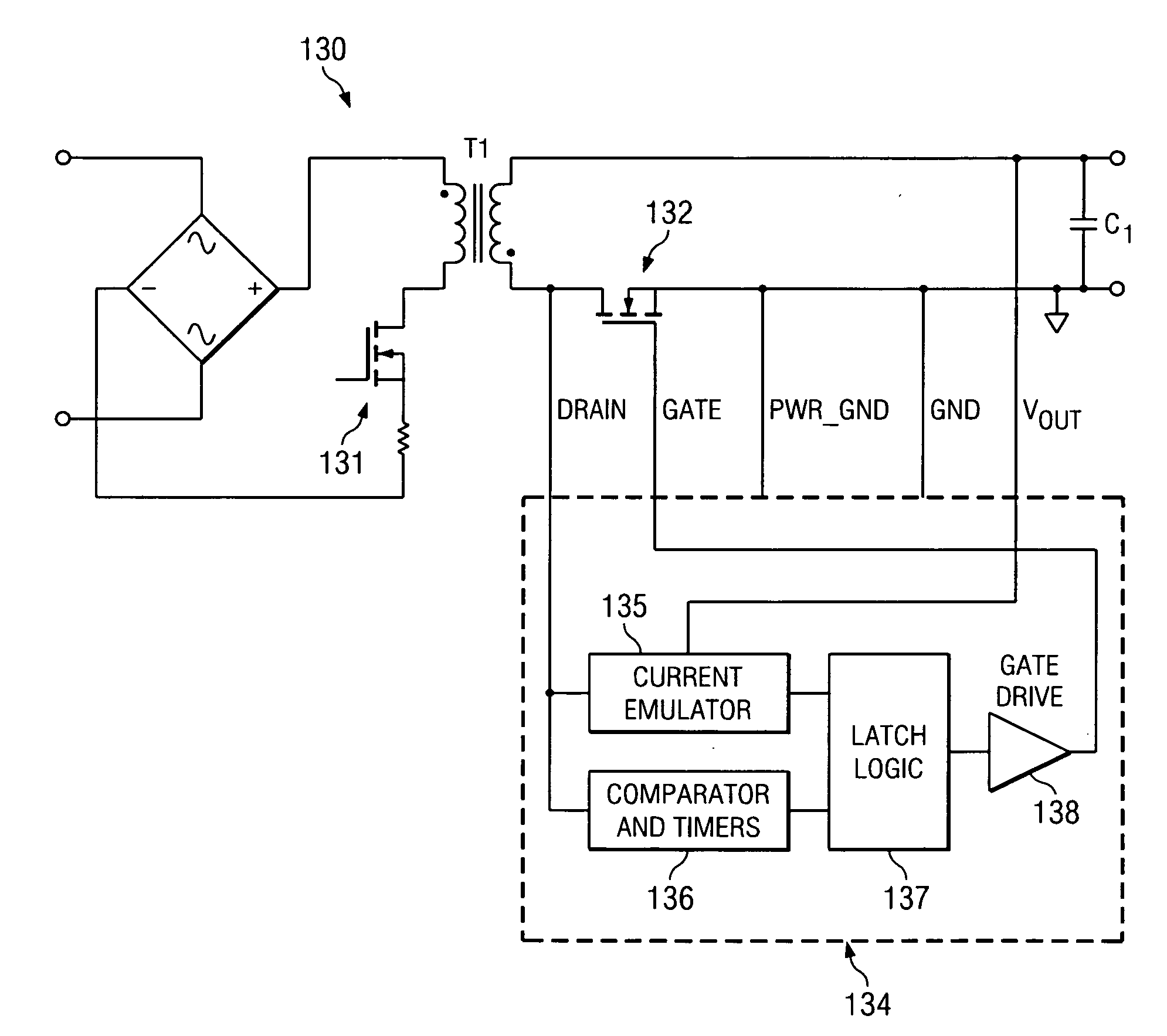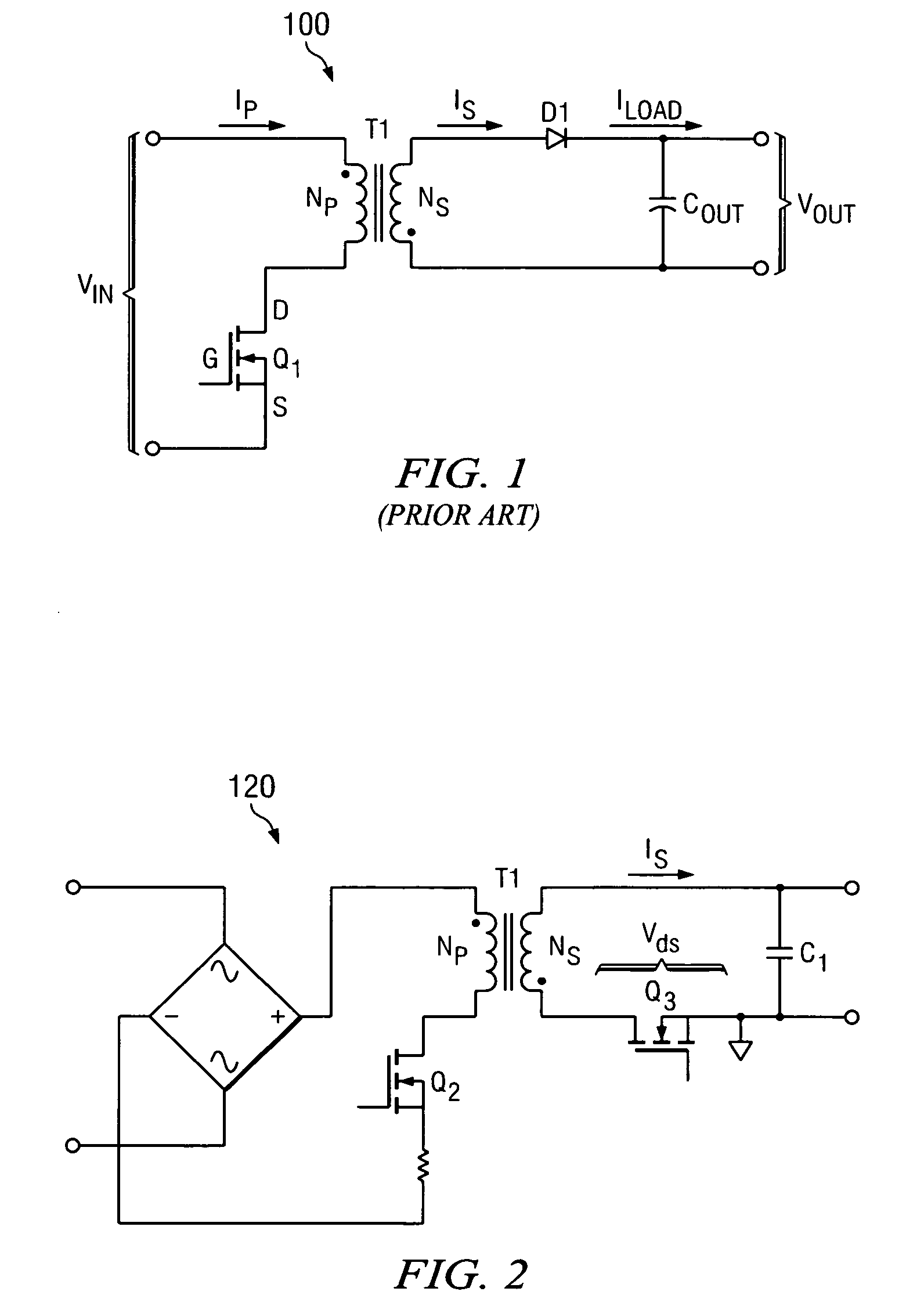System and method for synchronous rectifier drive that enables converters to operate in transition and discontinuous mode
a technology of synchronous rectifier drive and discontinuous mode, which is applied in the direction of dc-dc conversion, power conversion system, climate sustainability, etc., can solve the problems of negative current, added complexity and cost to the circuit, energy loss, etc., and achieve the effect of avoiding unneeded transitions of synchronous rectifier switch and protecting against cross-conduction
- Summary
- Abstract
- Description
- Claims
- Application Information
AI Technical Summary
Benefits of technology
Problems solved by technology
Method used
Image
Examples
Embodiment Construction
[0034]Referring now to FIG. 3, a block diagram of a flyback converter 130 is illustrated in accordance with an exemplary embodiment of the disclosed system and method. Flyback converter 130 includes a synchronous rectifier in the form of a MOSFET switch 132. Switch 132 is connected between a secondary side of a transformer T1 and a ground reference potential. Switch 132 is operated as a synchronous rectifier based on signals supplied by a controller 134. Controller 134 senses the drain voltage on switch 132, as well as output voltage Vout, and derives a gate control signal applied to the gate of switch 132 to produce synchronous rectification.
[0035]Controller 134 includes a current emulator 135 for emulating current in transformer T1. Current emulator 135 senses output voltage Vout and the drain voltage of switch 132 to construct a signal representing the current in the primary side of transformer T1 while primary side switch 131 is on. The signal representing primary side transform...
PUM
 Login to View More
Login to View More Abstract
Description
Claims
Application Information
 Login to View More
Login to View More - R&D
- Intellectual Property
- Life Sciences
- Materials
- Tech Scout
- Unparalleled Data Quality
- Higher Quality Content
- 60% Fewer Hallucinations
Browse by: Latest US Patents, China's latest patents, Technical Efficacy Thesaurus, Application Domain, Technology Topic, Popular Technical Reports.
© 2025 PatSnap. All rights reserved.Legal|Privacy policy|Modern Slavery Act Transparency Statement|Sitemap|About US| Contact US: help@patsnap.com



